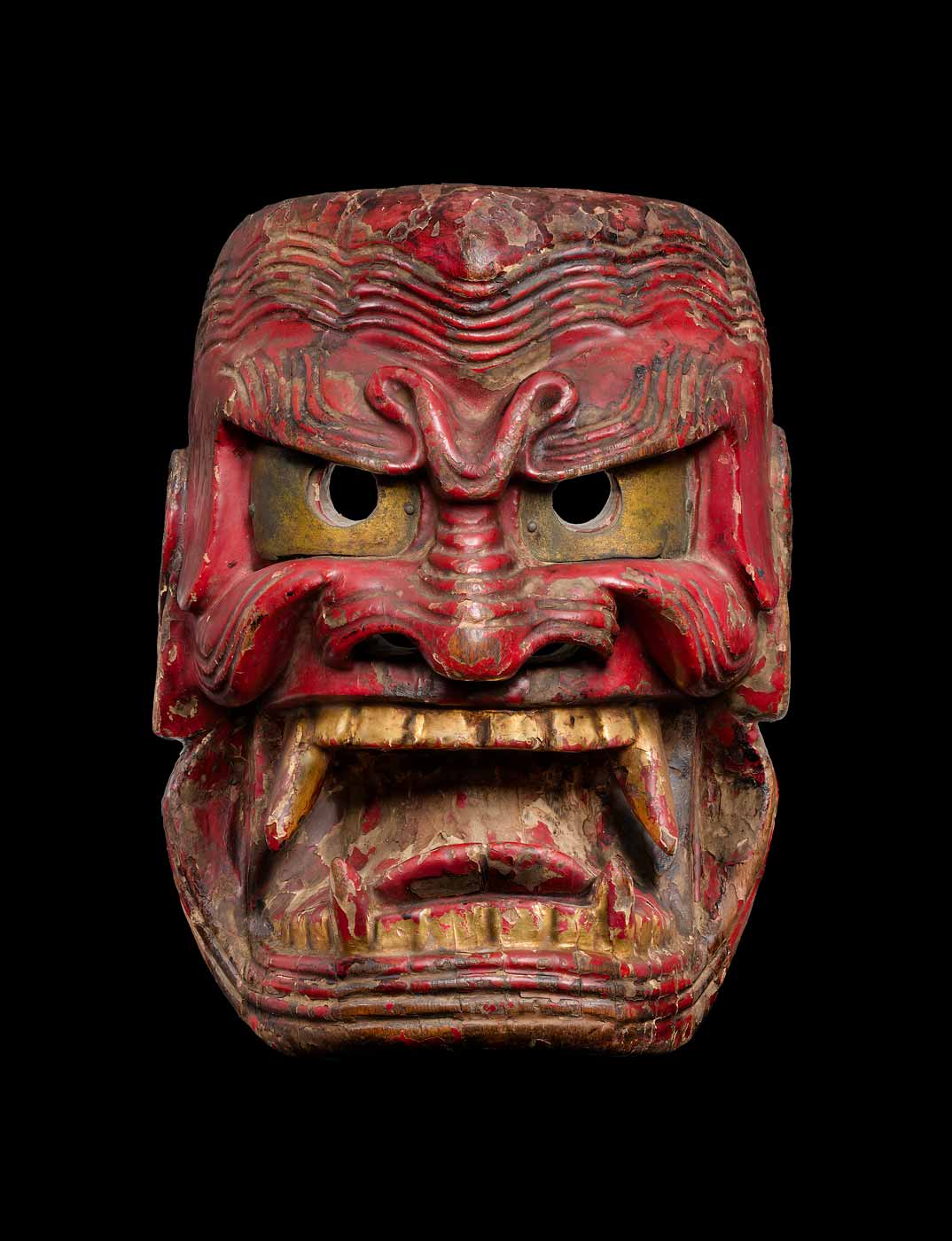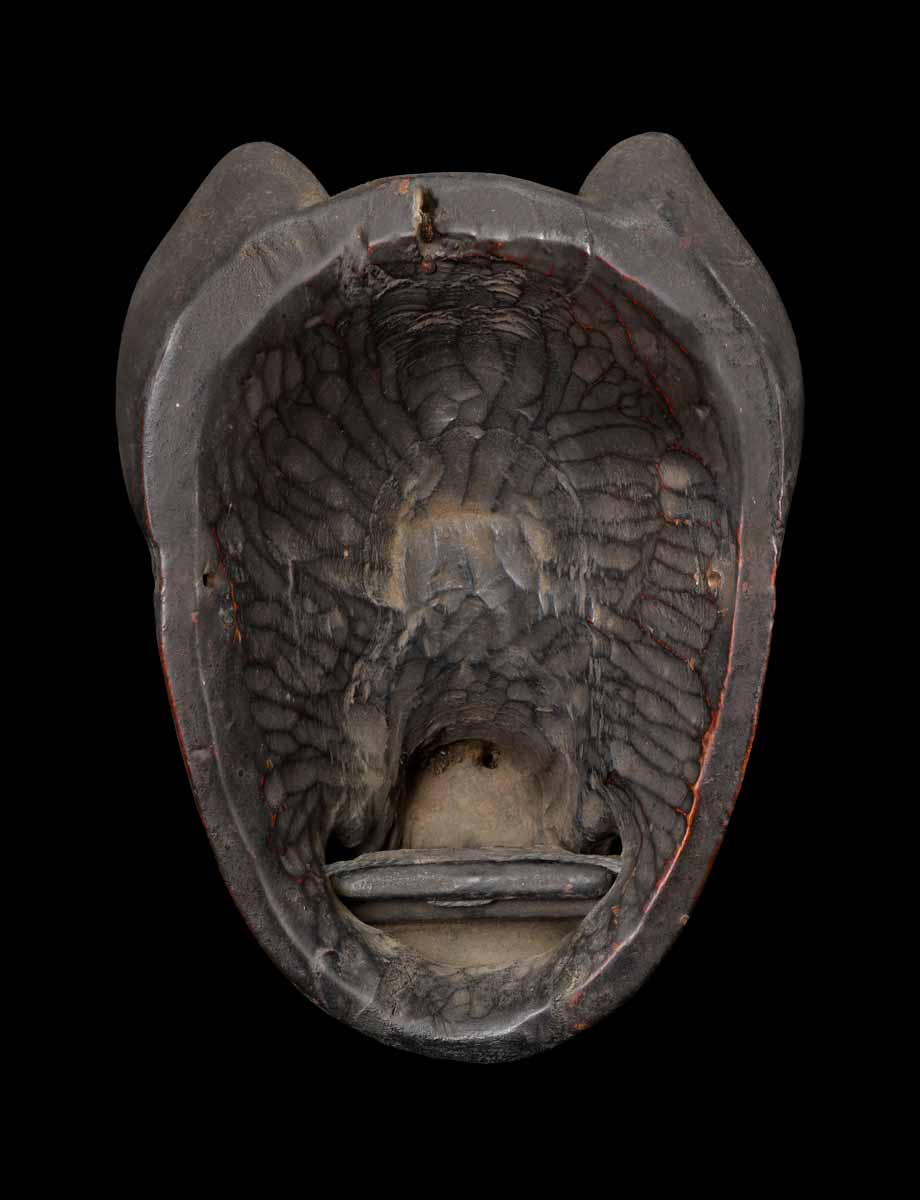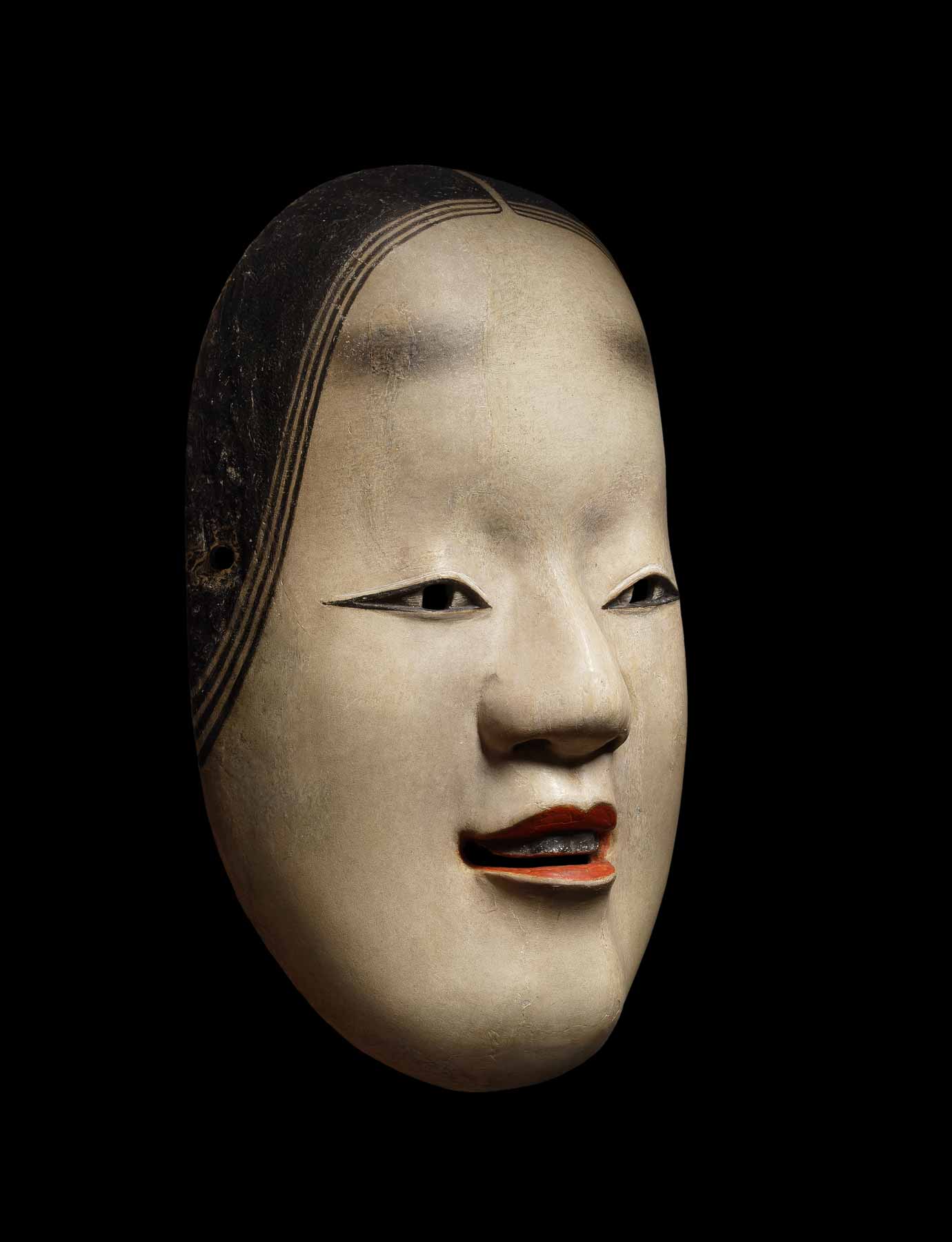Obutsu-men
Mask
- Contact Us
-
Material
Wood and pigments
-
Period
Edo period, 18th century
Description
OBUTSU-MEN MASK OF A BUDDHIST DEITY
Noto Peninsula
Obutsu-men literally means "mask of a Buddhist deity," representing deities, protective demons, or supernatural figures associated with esoteric Buddhism (mikkyō). Unlike the masks of Noh or Kyōgen theater, they were not intended for stage performance, but rather for religious rituals (e.g., Shugendō, Bugaku, or processions). Featuring fierce, grimacing faces with bulging eyes, exposed teeth or fangs, often painted in red, black or gold, they embody figures such as myōō (明王, Wisdom Kings), kongō (金剛, vajra guardians), or oni (protective demons) and were believed to ward off evil spirits and protect worshippers during ceremonies.


